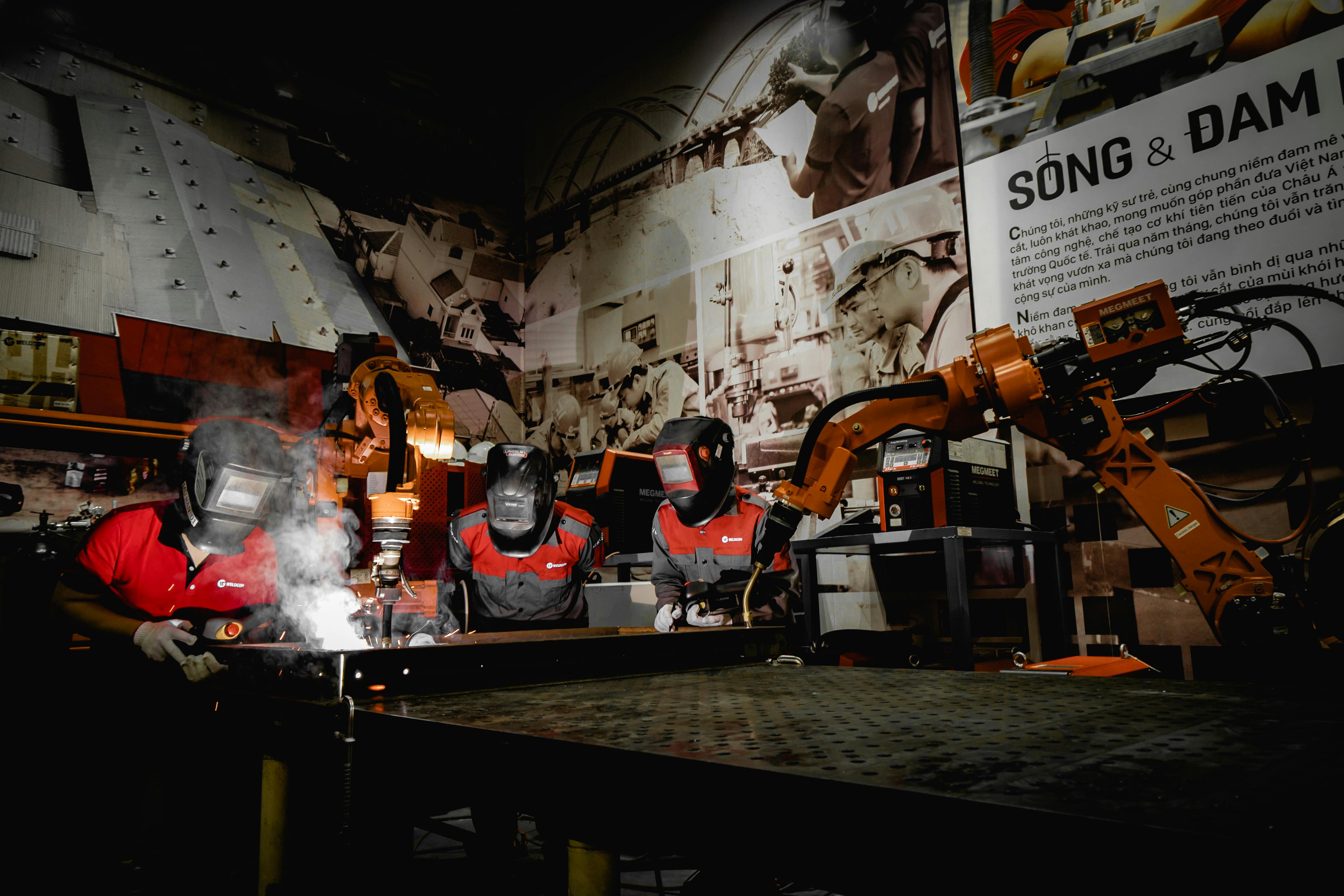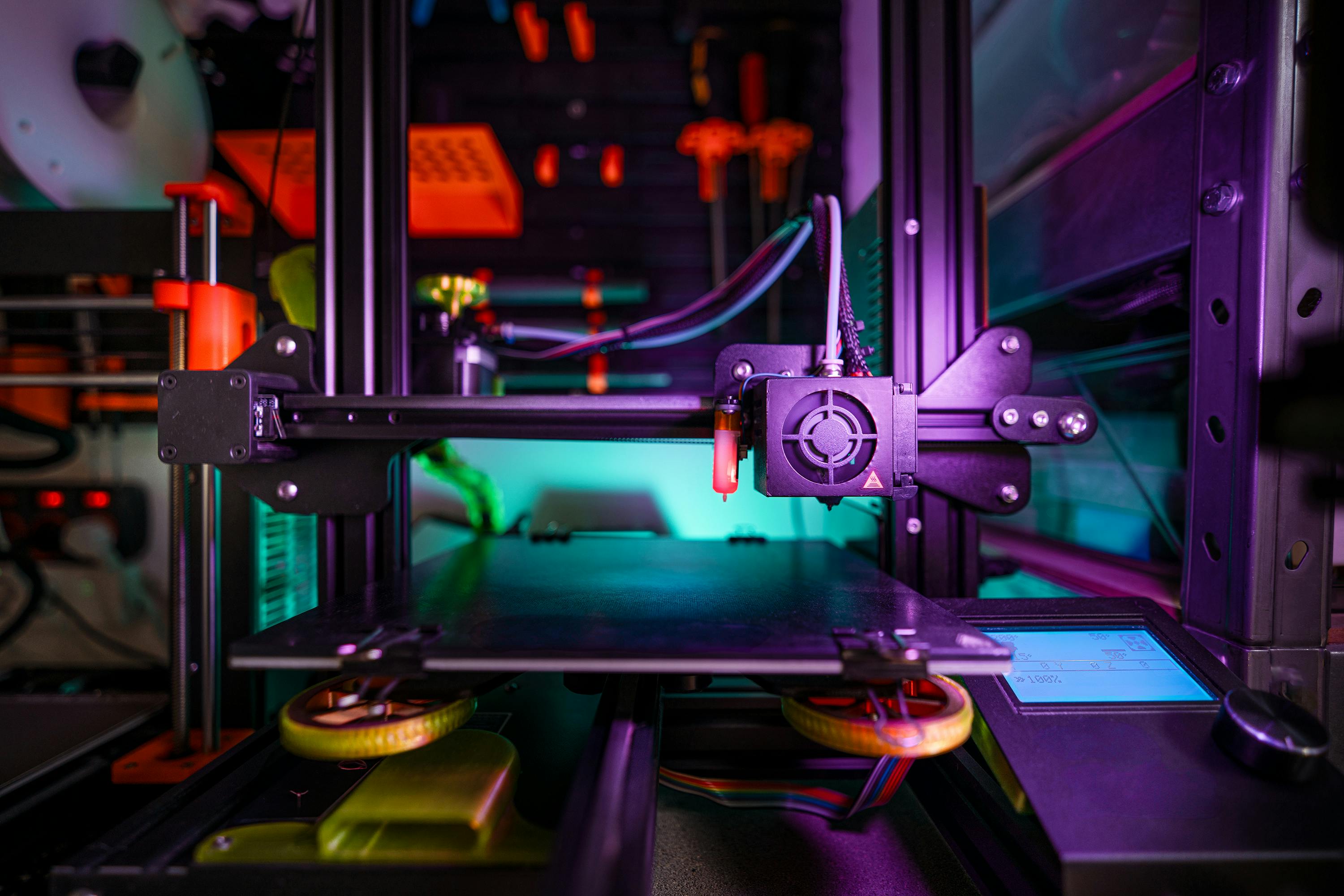Japan’s Robotics Lean Secrets for Global Manufacturing Success
Let me set the scene: In 2019, wandering a Toyota assembly plant floor (Nagoya, specifically—the nerve center of global automotive quality), I witnessed a symphony of robotic arms, sensors, and humans choreographed so seamlessly it bordered on surreal. Some might imagine robots lumbering in steel cages, guarded from humans, but here, collaborative bots deftly handled intricate welding beside kaizen-minded line workers, both adjusting and learning in real time. I remember thinking, “This is what ‘lean’ looks like when future tech is genuinely embedded, not just bolted onto a process.”
So, what’s their secret? Well, dozens of manufacturers across the world have tried to “copy” Japan’s approach—few really achieve the same operational finesse or global market share jump. Having worked in lean-driven environments over a decade—and after several sobering consulting gigs where robotics integration went sideways—I’ve become fascinated with what Japan gets right (and where they sometimes stumble, honestly).
This blog doesn’t just list robot vendors or spout Toyota platitudes. Instead, I’ll unpack the advanced strategies Japan has used to make robotics and lean mutually reinforcing, the cultural and organizational glue that makes it stick, and how you (whether operating a mid-sized plastics plant in Ohio or overseeing global supply chains) can apply their playbook without missing what’s uniquely “Japanese” about it. There’ll be a few surprises, hard-won observations, and an exploration of limits: What works, what doesn’t, and why Japan’s approach is so persistently referenced but rarely replicated to full effect.1
Why Japan Integrates Robots into Lean Manufacturing: The Competitive Context
First, let’s ask the fundamental question that too many consultants gloss over: Why does Japan fixate on robotics-powered lean? Well, in a country historically squeezed for labor and natural resources, efficiency isn’t just a buzzword—it’s existential. Back in the 1970s, when Japanese automakers started accelerating robot adoption, the Western press painted it mostly as cost-cutting. But every Japanese engineer I’ve ever met frames it differently: as a means to stabilise quality, reduce process variation, and achieve what Shigeo Shingo called “mistake-proofing at scale.”23
Funny thing is, I used to think that robotics were basically a high-tech replacement for cheap labor. But the more I’ve watched successful Japanese factories (and, painfully, botched Western attempts at blind automation), the clearer it became: in Japan, robotics are extensions of a live, constantly evolving lean system. Not a silver bullet. Not a static “solution.” The question isn’t, “Where can we throw a robot to drop headcount?” Instead, it’s, “How might a robot eliminate a current source of waste or variation—and how will it flex as our gemba (shop floor) evolves?”4
- Robots in Japan are rarely stand-alone—a team of engineers, kaizen promoters, and line staff are involved in selection, maintenance, and process evolution
- Automation is justified by eliminating root causes of waste—maintaining agility is prioritized over mere headcount reduction
- Success is measured by flow, not just throughput. “Jidoka”—intelligent automation—is woven into every justification
Japan has the highest robot density in manufacturing worldwide—399 robots per 10,000 employees—over triple the global average. Yet, its plants employ more people per robot than Germany or South Korea, underscoring the collaborative (not replacement) approach.6
Historical Context and Culture: The Invisible Engine
On second thought, what really struck me most the longer I worked alongside Japanese process improvement leads was how little of this relied on “technology first” thinking. Japan’s competitive robotics integration is inseparable from social context—lifetime employment, pride in craftsmanship, and a view of automation as communal support for human potential (not replacement).
Companies like Toyota/Mazda treat “respect for people” as much more than HR blather: they empower workers to stop a robotic cell at the first whiff of quality risk. Contrast that with a stressful shift I once spent at a U.S. auto supplier—automation errors went ignored to keep the tally running. The difference isn’t more sophisticated hardware, it’s the human-centric philosophy that allows for adaptive problem-solving, not just rigid mechanization.7
Japan’s greatest advantage isn’t robot density—it’s the culture of mutual trust and relentless incrementalism. Tech is important, but it’s not transformative without that social substrate.
Core Strategies: Where Robotics and Lean Reinforce Each Other
Let’s get practical. I’ve lost count of how many “automation initiatives” I’ve seen outside Japan that sputtered out by Year Two—overspecified, under-owned, or never really accepted on the floor. By contrast, successful Japanese factories almost treat robotics as another opportunity for kaizen, a living part of their lean nervous system. But what are they actually doing differently?
-
Kaizen-First, Automation-Second Mentality
Robotics are almost never the first solution considered. Instead, teams exhaustively eliminate process waste (Muda), then bring in robots as a “last-mile enabler” to handle tasks humans cannot safely or reliably own. If conditions change, so do the roles of the robots.8 -
Empowered Front-Line Workers
Everyone (not just engineers) is trained to detect abnormality and empowered to “stop the line,” even if it means pausing a robotic cell. This is not a platitude. I’ve seen new hires at Denso temporarily halt high-speed robot operations when a single part was off-spec; management celebrated their vigilance.9 -
Iterative, Not Monolithic, Integration
Rather than mega-scale, one-and-done rollouts, Japanese manufacturers deploy robots gradually, learning from each deployment and making micro-adjustments at each gemba. Every step is an experiment, not a declaration of completion.10 -
Intense Focus on Flexibility and Jidoka
Automation without intelligence is anathema. Jidoka (“autonomation”—the ability for equipment or operators to detect and correct problems immediately) is non-negotiable. AI vision, haptic sensors, and other “smart” upgrades are layered in to support, not replace, human judgment.11
- Multi-disciplinary teams (production, IT, quality, HR) jointly own automation performance
- Robots are chosen based on tasks, not technology fads
- Success is measured by reduction in downtime, not just labor cost savings
- Pilots precede scale. Factories never go “all in” on a single hardware brand or platform
Robot Selection & Integration: How Japan Actually Does It
Okay, so, how do they pick and deploy actual robots? Here’s where it gets a bit messy—lots of case-by-case nuance. Years ago, I assumed Japanese plant managers just followed a procurement playbook: best-in-class robots, standardized for every process. What I found (and keep rediscovering) is radically more iterative and decentralized.
-
Problem-Centric Selection, Not Brand Loyalty
Cross-functional teams visit the gemba with the singular goal of identifying process needs. A plasma cutting robot? Great, but only if it solves an intractable pain point like awkward ergonomics or excessive scrap. They’ll switch brands if the need shifts.13 -
Pilot-First, Scale-Later Implementation
Every robot is treated as a hypothesis, not a fait accompli. Toyota’s famous “kitting robots” weren’t factory-wide from day one. The first units were adapted, “troubleproofed,” and only then expanded. This agility preserves capital (and team credibility).14 -
Continuous Training and Re-skilling
I still remember a 2018 session at FANUC’s training center—maintenance engineers learned to “re-teach” robot paths after kaizen events. In Japan, robotics training is ongoing: not just how to “run” a bot, but how to challenge, adapt, and even dismantle it.15
| Approach | Common in Japan | Common Elsewhere | Impact on Results |
|---|---|---|---|
| Pilots First, Scale Later | Yes, always | Seldom, often skipped to scale | Fewer catastrophic failures, better team buy-in |
| Cross-Functional Robot Selection | Team-driven, process-specific | Procurement/exec-driven | Higher fit to process needs, less wasteful spending |
| Continuous Training | Embedded in work routine | Periodic, as-needed | Faster troubleshooting, adaptive line evolution |
| Respect for Human Judgment | Universal (anyone can hit stop) | Manager or engineer only | More empowered teams, fewer “automation mishaps” |

Case Studies: Toyota, FANUC, and Kobayashi Seiko
You can talk strategy all day, but here’s where rubber meets the road. Let’s break down a trio of real examples, each illuminating what happens when advanced robotics and lean synchronise—or grind unproductively.
Toyota: “Autonomation” Applied at Scale
I still get goosebumps describing Toyota’s hybrid cell model—what you see is not just robots working in parallel with people, it’s robots with permission to halt production if anything’s amiss. An incident from a 2017 process audit sticks out: a sensor flagged misalignment in a thousandth component, instantly halting the robotic arm. Instead of blame, supervisors praised the “fail-safe” protocol; operators and maintenance jointly traced root causes, corrected human and robot programming, and then resumed. Through every tour, every failure analysis, the ethos is clear—intelligent stoppage, not mindless throughput.16
FANUC: Data-Driven Continuous Improvement
FANUC’s own factory (Oshino-mura) has become a poster child for the “smart robot Kaizen” approach. Visiting in 2022, I saw machine learning systems analyzing live cell data, generating improvement options for line teams. Unlike some Western plants where digital dashboards impress executives but intimidate operators, FANUC’s “professors” routinely host gemba-driven data sessions with technicians, with findings encouraged to shape weekly adjustment plans.
The kicker: nearly half of kaizen propositions in FANUC’s robotics division originate from line employees, not outside consultants.17
Kobayashi Seiko: Small Company, Big Results
Not everyone has Toyota/FANUC’s budget, and it’s one thing I really appreciate about the Japanese manufacturing landscape—small firms can innovate too. Take Kobayashi Seiko, a Nagano-based precision plastics firm. Their process: start with a single, cobot-facilitated injection-molding line, have every staff member participate in initial root cause mapping, then gradually scale where improvements justify new outlays. Over two years, output per worker increased 38% while overall floor employment never dropped. The lesson: robotics-as-kaizen enabler trumps hardware bravado.18
The Japan Robot Association estimates over 55% of new robots go into companies with less than 500 employees—underscoring that you don’t need massive scale to apply these principles. SMEs contribute disproportionately to Japan’s global manufacturing share.19
Emerging Trends and Global Lessons
Now, if you’re expecting this to turn into a “Japan did it so you should too” sermon, let’s hit pause. Many global factories—Germany’s top-tier auto suppliers, US electronics giants, even start-ups in Vietnam—are blending Japanese-style robotics/lean with regional twists. What sets Japan apart for now are several next-level trends I’ve only recently started tracking.
- Human-Robot Collaboration Beyond Assembly
Cobots aren’t just for weld cells—Japan’s integrating them in inspection, logistics, and late-stage customization, with real human-in-the-loop control. I saw one mid-sized firm (Sumitomo Electric) shorten customer lead time 19% in a single quarter this way.20 - AI/ML and IoT Integration
Whereas early Japanese bots were “dumb muscle,” today’s smart cell automation leverages big data: AI-driven visual inspection detects sub-millimeter flaws, while IoT sensors predict breakdowns. It’s a shift from reactive maintenance to predictive excellence. - Rapid Up-skilling Initiatives
Faced with an aging workforce, Japan’s investing heavily in hybrid learning—combining VR, simulator-based training, and “shadow coaching.” A 2023 AMT-Japan survey found 61% of process improvements now include digital skill upgrades for incumbent workers—a massive jump from pre-pandemic figures.21 - Supply Chain Resilience Through Robotics
COVID-19 and regional geopolitics forced firms like Panasonic and Canon to harden supply chains—autonomous mobile robots (AMRs) now route parts flexibly around labor or security disruptions. In the “just-in-case” era, robots themselves become the redundancy.
Interview seasoned kaizen leaders in your sector about their most successful—and most disastrous—robotics integrations. Ask: What surprised them about scaling, and what did Japan get right that’s hard to transplant elsewhere?
Practical Action Steps for Manufacturers Worldwide
At this point, you might be wondering, “That all sounds good, but what can we actually copy or adapt right away?” Here’s what I tell clients:
- Pilot a Single Cell with Cross-Functional Ownership: Don’t start with an IT-only project. Every pilot should involve process, engineering, and floor staff equally, with clear metrics tied to flow and quality, not just headcount.22
- Standardize Kaizen Feedback Loops: Create protocols for regular, ground-level feedback on every robotic deployment—weekly at first, biweekly once stabilized.
- Prioritize Flexibility, Then Automation: If your process isn’t already “lean enough” for quick changes, fix that before adding robots. Otherwise, you’ll be automating waste.23
- Invest Aggressively in Training for All: Make sure up-skilling budgets aren’t just for maintenance techs and engineers—operators, quality leads, and even supervisors should continuously learn alongside bots.24
- Celebrate Micro-Improvements: Document every improved cycle time, mistake-proofing fix, or downtime avoidance. This builds the experimental culture Japan gets so right.
| Step | Key Action | Why This Matters |
|---|---|---|
| Pilot | Involve ALL stakeholders, start small | Builds ownership, surfaces real issues |
| Kaizen Review | Weekly feedback and troubleshooting | Prevents stuck automation, locks in learning |
| Flexibility First | Lean process before full automation | Avoids automating waste |
| Upskill Broadly | Cross-functional, continuous training | Enables adaptive automation |
List three areas in your facility where automation could save labor and reduce waste. Next, map which kaizen steps must be completed first.
Conclusion: Lean Robotics for a Volatile Global Landscape
Honestly, the more I study and work with Japanese manufacturers, the less I see “robots” as the real magic—the secret sauce is thoughtful, incremental, and deeply human-centric system design. If there’s a headline, it’s that Japanese-style integration of advanced robotics and lean manufacturing isn’t something you can just download or “copy-paste” into any organization. It’s culture, it’s continuous learning, it’s humility in tech adoption, and above all, it’s an experimental mindset built over decades.
In my experience, the manufacturers who excel globally aren’t the ones with the most robots, ERPs, or flashy AI dashboards—they’re the ones who keep questioning, iterating, and involving every level of staff in the challenge and the solution. Japan still leads this conversation, but as the world adapts and the pressure to build resilience mounts, there’s every reason for readers of this blog—whether based in Düsseldorf, Detroit, or Dongguan—to steal liberally from their playbook but also adapt it courageously.
Don’t be seduced by robotics for its own sake. Use technology to deepen rather than dilute human problem-solving, and let your automation evolve as your processes (and people) do.
References & Source List
Works Cited & Recommended Further Reading



